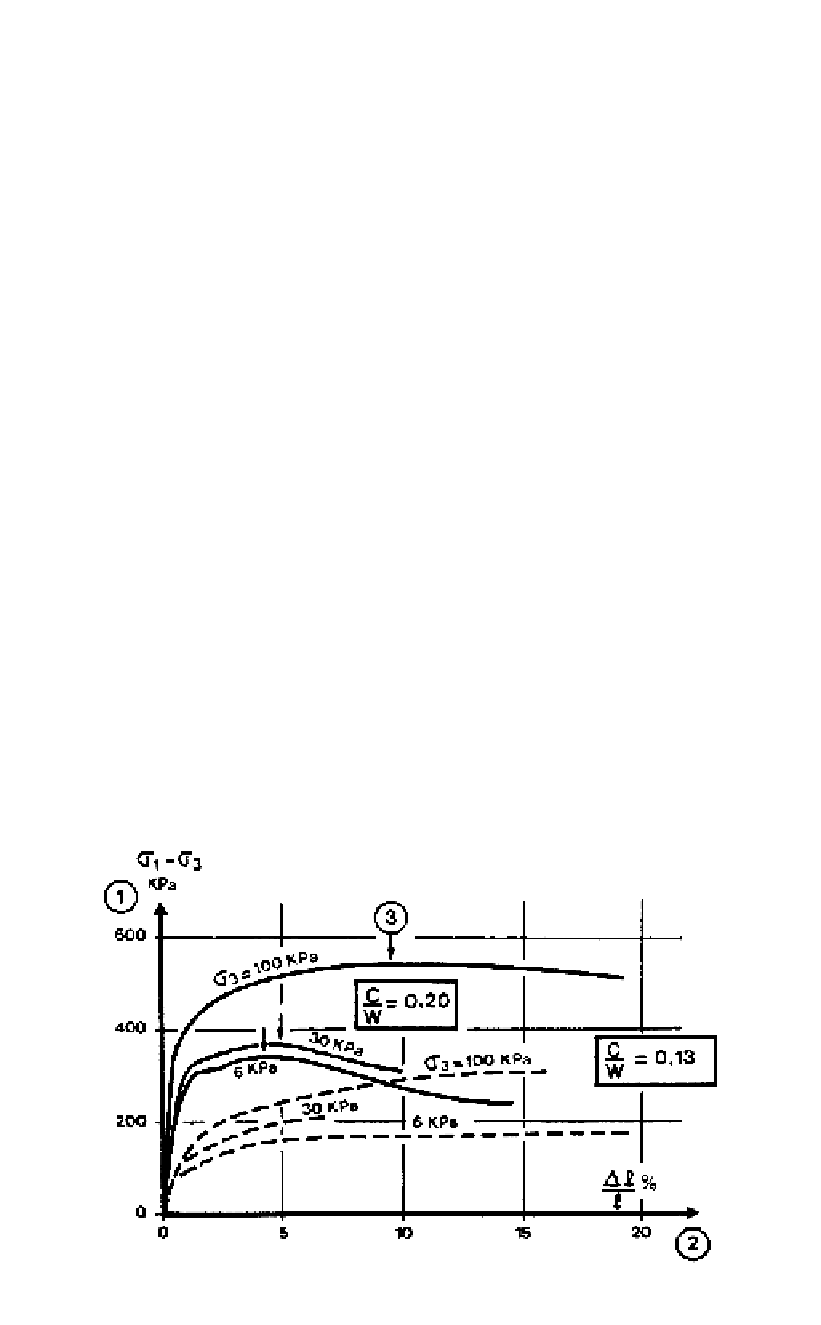Environmental Engineering Reference
In-Depth Information
the wall compresses under the weight of the embankment during its construction and
the water load as the dam is filled, substantial loads will be shed onto the wall by nega-
tive skin friction. This can cause crushing of the wall and penetration of the wall into the
dam fill.
For most dam applications it is preferable to use a plastic concrete backfill i.e. a con-
crete with bentonite added. ICOLD (1985) suggest that the following properties are
desirable:
- The Youngs Modulus of the wall should relate to that of the soil, i.e. E
wall
5 E
soil
;
- Failure strain should be high. Figure 10.23 shows some examples;
- Unconfined strength. A high strength is not important, in the order of 1-2 MPa
(Xanthakos suggests an upper limit of 2 MPa).
ICOLD (1985) indicate that the composition of plastic concretes should be (per cubic
metre):
- 400-500 litres - bentonite slurry;
- 100-200 kg - cement;
- 1300-1500 kg - well graded aggregates less than 30 mm size.
The water cement ratio will be between 3.3 to 1 and 10 to 1 according to the type of
cement, the higher values being for BLF cement, the lower for portland cement.
The bentonite slurry is to keep the cement and aggregates in suspension during place-
ment and assure plasticity and low permeability. The percentage (by weight) of bentonite
to water varies from 2% to 12% according to its hydration. The marsh funnel viscosity
should be 50 seconds.
If coarse aggregates are replaced by medium to fine sand the composition should be:
- 375-750 litres - bentonite slurry;
- 75-290 kg - cement;
- 500-100 kg - medium to fine sand.
Figure 10.23.
Triaxial tests on plastic concretes (ICOLD, 1985). (1) Deviator stress, (2) strain, (3) failure.

